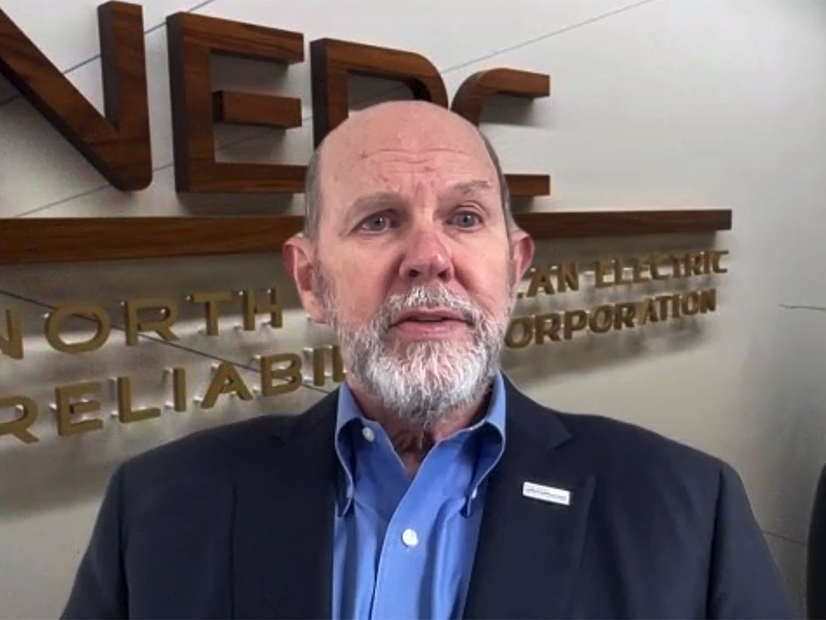NERC CEO Jim Robb told grid stakeholders July 25 that the rapid pace of change in the electric grid has left the ERO dealing with “frontier issues” that challenge its traditional ways of operating.
“I always like to start off, when I talk with folks, that we are in a pretty amazing period of time for the electric grid because of the pace of change that we’re seeing, and the fact that it’s coming at the grid [from] a number of different directions at the same time,” Robb said in his keynote address to the WIRES 2024 Summer Meeting in Boston.
“So we’re having to rethink a lot of things; we’re having to kind of, I don’t want to say invent new physics, but we’re having to understand physics in ways that we haven’t had to before, and that’s made our mission quite challenging.”
In his talk, Robb said one of NERC’s roles in recent years is “to help catalyze a conversation around the reliability of the system, and how that plays against … all the environmentally policy-driven changes that we’ve seen to the sector.”
He described energy policy as a balancing act between “three competing dimensions,” comprising access and affordability of energy, energy reliability and security, and the sector’s environmental footprint and sustainability.
“Where the industry gets in … trouble is when we overweight one of those dimensions and [don’t] pay attention to the implications for the other two,” Robb said. “Because they all work at cross purposes, right? We could build a really cheap electric system, but it probably wouldn’t be reliable and it probably would have an environmental impact we don’t like. We could build a 100% reliable system, but we probably wouldn’t be able to afford it and we may not like its environmental impact.”
Robb warned that with the large amount of renewable generation coming onto the grid, natural gas is becoming an increasingly essential source of reliable, dispatchable generation. With that reliance, the traditional construct of gas and electricity as “two parallel systems that happened to grow up together” no longer works. He said regulators “need to take a fresh look at the gas system as it relates to electricity, recognizing that gas has a number of other very important things it needs to be able to do, but we need to fix that interface and make that work for the benefit of customers.”
ITCS Progress
During the Q&A period, WIRES Executive Director Larry Gasteiger asked Robb about the Interregional Transfer Capability Study that NERC has been working on since Congress ordered it last year in the Fiscal Responsibility Act.
Last month, NERC published an overview of its work on the ITCS so far. It plans to release the report in three tranches, with the U.S.-relevant publications to be concluded by November of this year and a further report on Canadian transfer capacity in the first quarter of 2025. (See NERC Promises 1st ITCS Results by August.)
Robb acknowledged that the “little homework assignment from Congress” has become “an even bigger beast than we thought it was when we started.” He said NERC spent nearly a year creating the framework for the study and identifying the tools and models for carrying it out.
One of the challenges Robb identified was that the FRA required NERC to base the ITCS on the transmission planning regions identified in FERC Order 1000. This created problems because of the size of some of the regions; in MISO, for instance, “you obviously need to look at MISO North different than you look at MISO South,” he said.
Although the first results from the ITCS will not be released until next month, Robb said some “early insights” from the study include that interregional transfer capacity differs greatly from summer to winter, and from one region to another. The interplay between weather, changing demand, and the physical assets on the grid have made the job “complicated to work our way through,” he added.
“The challenge with interregional transfer assessments is that it really has a little bit to do with the wires, but it’s got a lot to do with the generating resources in the various planning areas and the loads, and the nature of the weather patterns that we’re dealing with,” Robb said. “So, we’re doing a lot of scenario analysis, using the big storms that we’ve seen as ways to pressure-test the system. We also have to kind of forecast where we think new generation will come in, what it will look like and how it would be impacted by those weather systems.”



